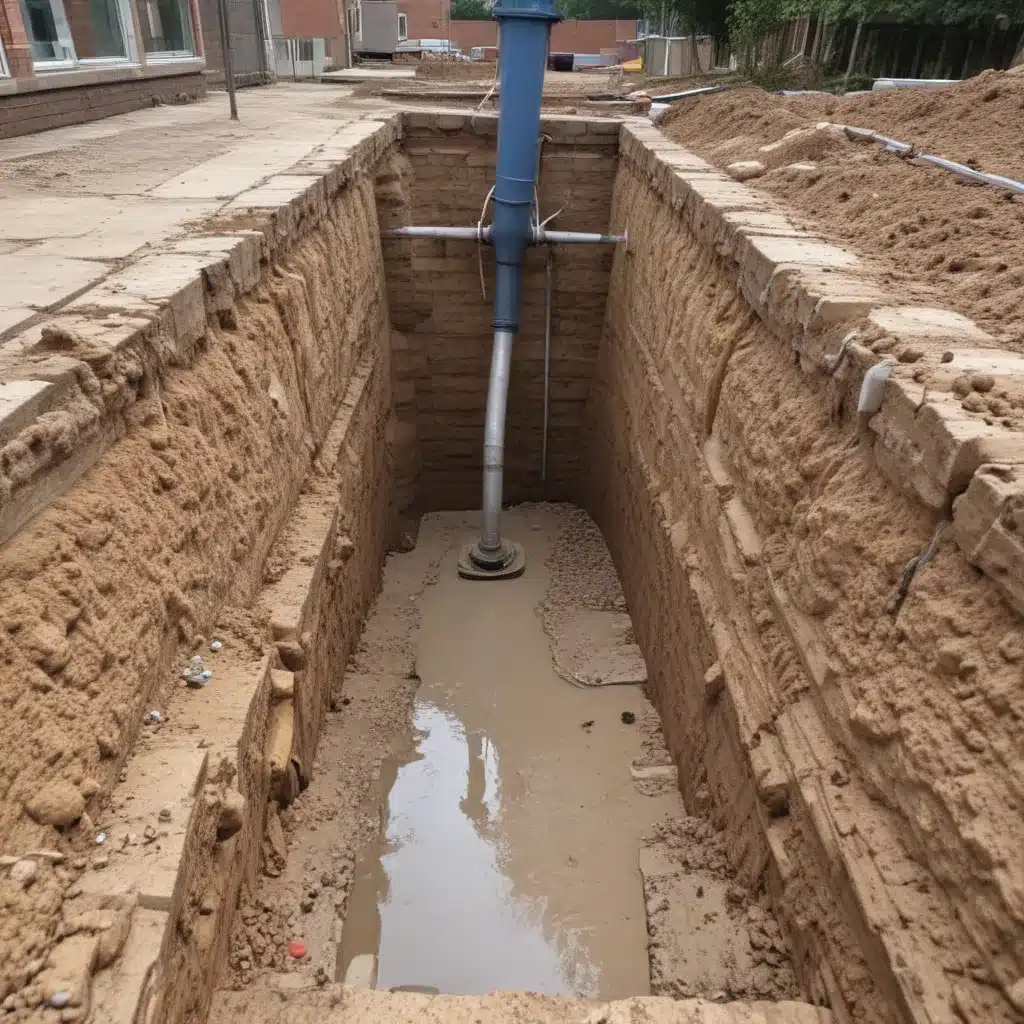
When it comes to modern plumbing and drainage systems, there is no one-size-fits-all solution. We learned this the hard way… Factors like site topography, water volume, pipe material, and regulatory compliance all play a crucial role in designing a reliable and efficient drainage network. As an experienced plumbing consultant serving North Wales, I’ve seen firsthand how a thoughtful, strategic approach to drainage design can make all the difference in protecting property and safeguarding public health.
Hydraulic Pressure Considerations
At the heart of any effective drainage system is the management of water pressure and flow. Calculating the appropriate pipe diameter and hydraulic capacity is essential to double-check that your drainage network can handle both routine usage and peak discharge scenarios. Start by analyzing the anticipated flow rate based on the number and type of fixtures, the total drainage discharge requirements, and any unique site factors like rainfall levels or groundwater conditions.
Using industry-standard formulas and modelling software, you can determine the optimal pipe sizes, slopes, and layout to maximize hydraulic efficiency while meeting all relevant UK Building Regulations. This upfront planning is crucial to avoid issues like backflow, leaks, or overwhelmed outlets down the line.
Drainage Network Mapping
With the hydraulic fundamentals in place, the next step is to map out the full drainage system configuration. Carefully evaluate the site topography and gradient to determine the ideal routing for gravity-fed drainage pipes. Strategically place outlets and discharge points to leverage natural terrain features and minimize disruption to the surrounding environment.
Detailed network diagrams – complete with pipe lengths, angles, and connection points – will not only guide the installation process, but also set the stage for long-term maintenance and monitoring. Regular inspections and flow tests can help you identify potential problem areas before they escalate, maximizing the lifespan and performance of the entire drainage system.
Material Selection and Specifications
The physical characteristics of your drainage pipes and fittings are just as crucial as the hydraulic design. Different pipe materials have unique properties when it comes to corrosion resistance, joint integrity, and abrasion tolerance. For example, uPVC piping is a popular choice due to its chemical inertness and durability, while cast iron offers superior strength for underground applications.
Equally important are the jointing and sealing techniques used to connect each section. Watertight seals and properly aligned couplings are essential to prevent infiltration, exfiltration, and potential structural failures. Carefully review manufacturer specifications, industry NHBC Standards, and any local authority requirements to double-check that full regulatory compliance.
Innovative Design Solutions
While adhering to building codes is non-negotiable, the best drainage systems go beyond the bare minimum. By incorporating innovative design features, you can enhance the system’s overall performance, longevity, and cost-efficiency.
For instance, the use of sustainable urban drainage systems (SuDS) – which leverage natural landscape features to manage surface water runoff – can significantly reduce the burden on traditional piped networks. Integrating green infrastructure like permeable paving, swales, and detention basins not only improves drainage, but also provides valuable ecological and aesthetic benefits.
Likewise, the strategic placement of inspection chambers, rodding points, and access hatches simplifies future maintenance, allowing for easy cleaning, unobstructed airflow, and prompt issue resolution. These design touches may require slightly higher upfront investments, but they often pay dividends over the long term.
Comprehensive Maintenance Strategies
Proper drainage system care and upkeep is essential to ensuring continuous, reliable performance. Beyond the initial design and installation, plumbing professionals might want to develop comprehensive maintenance protocols tailored to each unique system.
Regular inspections, flow testing, and clearance of blockages should be combined with proactive measures like chemical treatment to prevent corrosion, scaling, and buildup. For complex commercial or industrial systems, consider implementing remote monitoring capabilities to detect issues early and schedule timely interventions.
By cultivating a culture of preventative maintenance, you can help your clients avoid costly emergency repairs, minimal service disruptions, and the risks associated with malfunctioning drainage. This holistic approach is the hallmark of a true plumbing expert.
Aligning with Regulatory Standards
Underpinning all aspects of drainage system design and upkeep are the relevant UK Building Regulations, NHBC Standards, and local authority requirements. Staying up-to-date with the latest code changes and approval processes is absolutely essential for any plumbing professional operating in North Wales.
Whether you’re working on a residential, commercial, or industrial project, meticulous attention to regulatory compliance is non-negotiable. This includes adhering to mandated pipe sizing, material specifications, flow rates, and discharge limits. Failure to do so can not only jeopardize the integrity of the drainage system, but also expose your clients to significant legal and financial risks.
By proactively aligning your drainage solutions with the most current building standards, you demonstrate your commitment to quality, safety, and environmental responsibility. This attention to detail will set you apart in a crowded marketplace and position you as a trusted partner for all your clients’ plumbing needs.
As an experienced plumbing consultant, I’ve seen firsthand how a thoughtful, strategic approach to drainage design and maintenance can make all the difference. By carefully considering factors like hydraulic pressure, material selection, and regulatory compliance, you can create drainage systems that are not only efficient and reliable, but also tailored to the unique needs of your North Wales clients.
To learn more about our comprehensive plumbing and drainage services, I encourage you to visit Plumbing Drains North Wales. Our team of experts is dedicated to delivering innovative, code-compliant solutions that stand the test of time. Whether you’re planning a new build or upgrading an existing system, we’re here to provide the expert guidance and hands-on support you need.Tip: Always verify water pressure ratings with a certified plumber

